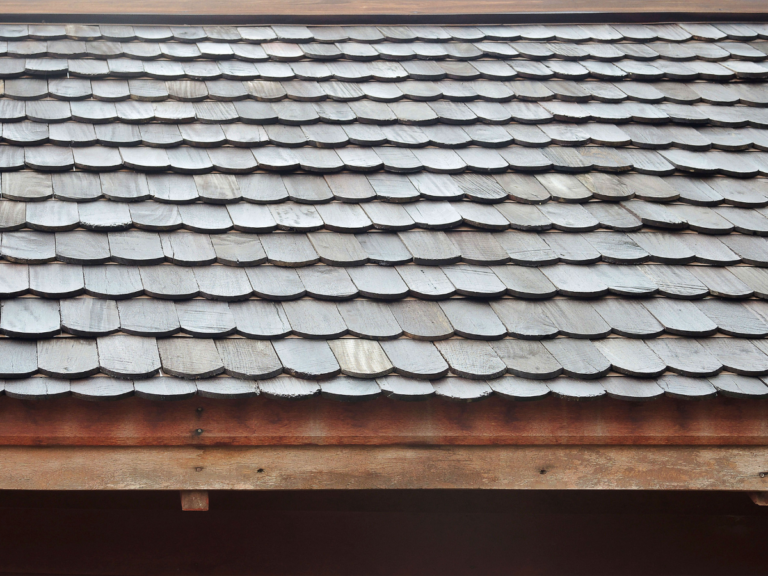
Table of Contents
You never really need to know what type of roof you have until you need to repair the roofing materials or replace the roof entirely.
When this happens, it's important that you know the type of roof you have so you can tell the person coming to fix your issue what they're up against. Different roof styles and roofing materials call for different approaches, so knowing your exact roof design is important.
The problem is, few people know what roof style they have at home - but that's where we come in...
Before we look at the three types of roof shapes, let's just take a moment to look at the different roofing materials that are most common here in the UK.
Asphalt shingles are easily the most common roofing material you'll come across in the UK, and it's used for both domestic and commercial buildings a lot.
This roof type is low-cost, because it's basically a composite shingle (or mostly concrete tile) that's cheap to produce, and they also offer the perfect balance between thermal insulation and 'cool roof' to allow the building to essentially breathe.
Asphalt shingles will typically last between 20-30 years, which is much longer than most other types of roofing materials.
Metal shingles are perhaps less common on domestic homes, so you might not expect to see this. However, some modern buildings will have a metal roof. Despite metal roofs being more modern, they're not nearly as expensive as most people think.
A low galvanised metal roof is cheap. However, metal roofs are usually reserved for flat roofs or curved ones - which we'll get on to later. Metal roofs are easy to spot though, so you shouldn't have any problem identifying these.
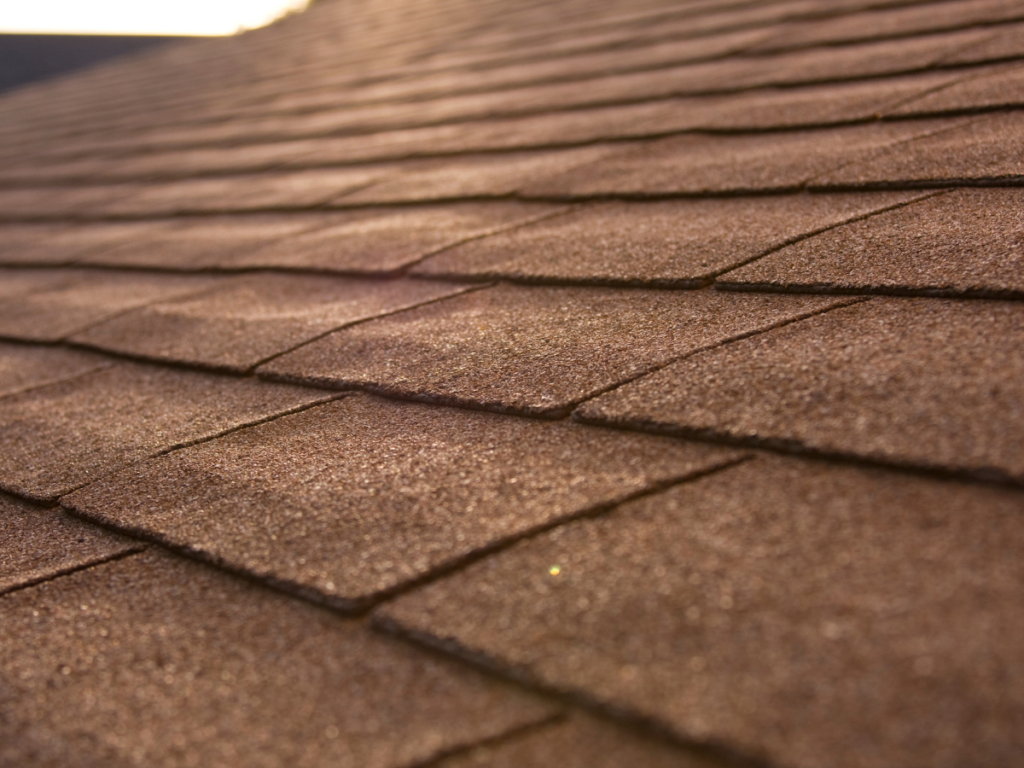
Slate roofs should only ever be dealt with by a roofing company or roofing contractor with sufficient training, as a slate roof is often a HUGE roofing project. That's because slate tiles weigh a lot!
Despite the efforts involved in repairing slate shingles, this is one of the most effective roofing material you can find. Why? Because these roofing shingles can last for 75 years and have no problem with dealing with heavy rainfall.
Natural slate is a great roofing material because it's durable and doesn't absorb water - although a natural slate roof will certainly cost more than other roofing shingles, like asphalt.
Solar tiles are becoming more and more popular for new-builds as we move towards a greener approach to housing. And yes, solar tiles work exactly like solar panels.
Better yet, solar tiles can be installed over any existing shingles you already have, so you don't need to replace the roofing shingles entirely.
These types of roofs use natural light from the sun to generate energy for your home, so although the initial investment is quite high, they will eventually pay for themselves in savings over the years.
Clay tiles last even longer than slate tiles - even up to 80 years.
They're instantly recognisable by their clay material. However, it's important to note that although these technically have a longer shelf life than slate tiles, this roof type is prone to breaking.
And when clay tiles break, you will again need to rely on a roofing contractor to fix the issue. That's because the weight of clay tiles is surprisingly heavy, and a roofing contractor will need to assess the structure of your building to ensure the tiles can be replaced.
With that said, these types of roofs are still pretty common in the UK, although not quite as common as asphalt and slate roofs.
Wood shingles add a lovely natural finish to the property, so if you have wood shingles, again, it'll be instantly noticeable.
This roof style is favoured by many for its natural look, but many don't realise how well these roof designs last too.
It depends on the wood that the homeowner chooses, of course, but some can last upwards of 50 years - and the price for wood shingles isn't too high either.
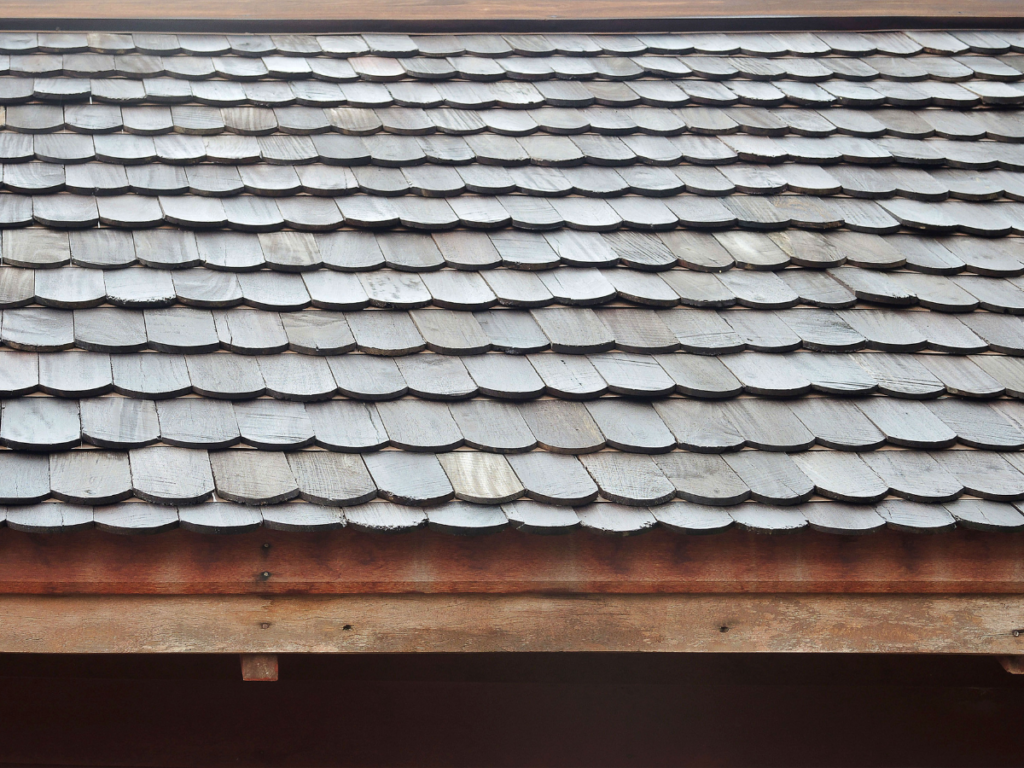
If you want a true, natural look, though, then a green roof is the best option. These roof designs are much more modern, but they do more than just help the environment.
A green roof is covered in plants (so naturally they look better than any concrete tiles or composite shingles), but they also outperform most other shingles and roof types for improving air quality, thermal insulation, and reducing water runoff from your roofs.
Yes, a green roof might be a modern idea, but we have a feeling we'll be seeing more of these roof types moving forwards as roof designs catch up with our eco-awareness.
Now that we've dealt with the roof designs and roof style we see most often here in the UK, we need to focus on roof shapes.
It's actually far more important that you know the type of roof you have, than it is to know which roofing material is used to improve the design. That's because when you need help from a roofing company, they'll need to know which type of roof you have as a priority to decide things like:
Now, broadly speaking, there are three types of roofing, and despite there being many different roof styles, shapes, and designs, they'll largely be categorised as: flat roofs, gable roofs, or hip roofs.
However, these categories are quite sweeping, so as well as the three most common types of roofs, we'll also look closer at some more unusual ones, too.
Below, we'll look at the different types of roofs that fall into these broader categories so you can pinpoint exactly which roof type you have and explain that to any contractor effectively.
All flat roofs are, you guessed it, flat - although not strictly speaking. Any flat roof will be considerably smaller than a gable roof or hip roof, but they still won't be completely flat.
That's because a flat roof would allow water to pool - and water pooling on a flat roof will mean the building below is compromised.
Still, a flat roof isn't just one simple roof, and there are many different types of flat roofs that you'll need to understand below.
A flat roof is still a pitched roof, except the pitch and roof slope is much more shallow than those you'd be used to seeing on other houses.
This slight pitch is perfect for water runoff and drainage, and many modern homes are now using it to create a rooftop garden or patio area.
When making a rooftop garden or patio area, though, it's much more likely you'll see a parapet roof than a simple flat one like the example above.
Here, the walls of the building actually extend higher than the roof itself. The pitched roof is still pitched ever so slightly, and drainage will be incorporated into the design for proper water runoff, but the main difference here is that the extended walls act as a protective barrier, stopping people from inadvertently falling off the edge of the roof.
This is easy to distinguish from a flat, simple roof because of the extra few feet of wall creating a safety barrier around the edge of the roof.
Saltbox roofs are odd, in that they're a sort of hybrid between gabled roofs and flat ones. One side is far more flat than the other (but still with the slight slope for drainage), and the other is much more similar to a gabled roof.
The flat side meets with the lean to roof style to create a slightly misshapen gable - it's not your standard, clear triangle design, but a slightly off-skew one.
Nowadays, these roofs aren't as common on domestic properties, but any older property may still have this shape. To know if it's a saltbox roof, just look out for the misshapen gable.
A shed roof or skillion roofs are the same thing. It gets its more colloquial name 'shed roof' based on the fact that they're most commonly found on sheds, but skillion roofs are the same thing.
A shed or skillion roof simply has one single flat surface pitched at an angle for better water runoff. Although known as a shed roof, these are becoming more popular on modern builds as a stylish and unique way of having the water runoff capabilities of the gabled roof but with the style of a flat one.
Gable roofs are probably the most common type of roof here in the UK, and a gable roof will be what every child in the country draws when they're asked to draw a house.
It's the classic design that forms a triangle end shape when you look at the side or front of a property.
Just like flat roofs, a gable roof isn't just one simple design. There are many types (this is the largest category of roof there is), so knowing which type of gable roof you have couldn't be more important!
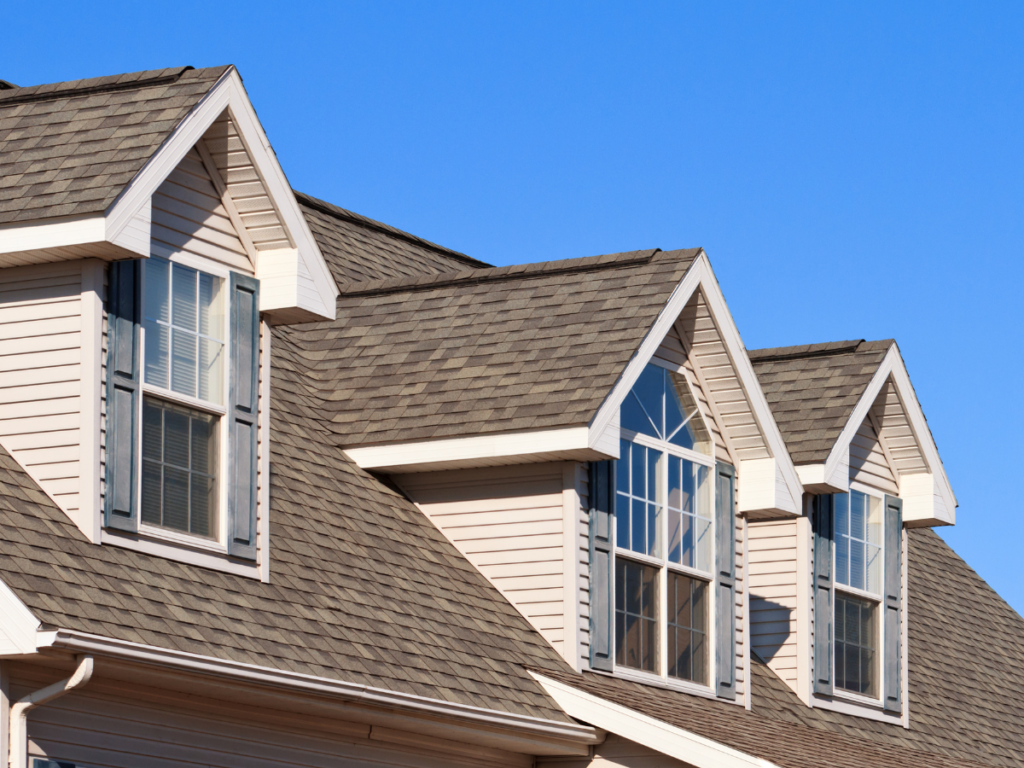
Instead of remaining open with the typical triangle of exposed bricks beneath, a box gable roof simply closes off at the gable, so instead of there being a triangle of bricks, the roof continues.
Because the roof is boxed off from the walls, it allows for better heat retention and can deal with poor weather effectively, essentially allowing water and snow runoff from all angles as opposed to the two slopes we're used to with gable roofs.
A cross gabled roof is basically where two or more gabled roofs intersect, essentially forming a cross.
These are typical on homes with a more complex layout of rooms, or with homes that also need a gable over the garage to the side of the property.
Cross gables roofs are more complex to deal with when there are problems, though, so make sure you know your cross from your standard when it comes to gabled roofs.
A dutch gable roof is actually more of a hybrid between a gable and a hip roof. It combines the roof ridge of a gable, with the box shape of a hip roof, allowing for a more interesting design and more workable space indoors.
Dutch gable roofs are perfect for vaulted ceilings or attic space, and there's room in the gable for a window to allow natural light in.
Better yet, these roofs are much more visually appealing than a traditional hip roof, so they add a lot of curb appeal too.
A front gable is simply a traditional gable roof, but where the gable sits over the front entrance to the property, rather than at the side of the house.
It's a very standard roof style, and it's easy to spot because of the triangle of exposed bricks over the top of the front door.
Somewhere between a flat roof and a gable, lies this gable roof with a shed addition, which can make identifying it a little trickier.
If you've had an extension to your front gabled home, then the chances are the roof contractor you've worked with will have used a shed roof style for the extension.
It can be added on to the gable easily, and gives a much taller space inside the property, so the ceilings will appear much further away here. Again, just like the shed roofing talked about above, it's just one continuous flat roof at a steeper angle for drainage.
A jerkinhead roof or clipped gables roof are just standard gables that have been clipped at the point where they meet to allow for more usable internal space.
These are common in areas exposed to high winds frequently, because standard gable roofs don't perform as well in high wind.
The clipped gables give your home more structural integrity, and they also look different from standard gables because of the obvious clipping you'll notice when you look closer at your roof.
M shaped roofs are easy to spot because, well, they look like an M. They're basically a double gable, where both of the roofs sit side by side, so instead of the usual triangle shape you now get an M instead.
The space between the two pitches has guttering to allow for the water and snow to run off in bad weather, so there's no risk of pooling and leaks in the centre area.
The open gable roof is basically just a boxed gable without the box. Where the box gable is closed off in all directions, the open gable has the triangle of more traditional bricks.
The only difference between the two are the exposed walls, but in terms of performance with drainage, etc., they perform the same - the difference is aesthetic.
Although a contractor will still need to know if the gable is boxed or open, because this will change the way they approach any repair or replacement job they carry out for you.
Hip roofs are different to the other two main categories because although they have the typical roof slope like a gable roof, they are much more shallow, like a flat roof.
All sides of the roof also slope down to the edge of the walls beneath, so there aren't any exposed triangle shaped bricks like you get with gable roofs.
Again, there are many different types, and we'll discuss them all below.
A cross hipped roof is exactly the same as a simple hip roof (which we'll cover below) except it's where two or more hipped roofs are joined together,
The most common way this is seen is where the cross hipped roof forms a letter L or T shape, and it's commonly used all over the UK.
Most often, these are used on houses with a more interesting layout of rooms that require the hipped roofs to join together.
A half hipped roof is exactly the same as a simple hip roof below, except they are shortened at the sides.
This makes the roof itself slightly shorter than a normal hip roof, but it also means there is more usable space for attic storage, eaves, and even windows.
Functionally, they perform the same, but aesthetically one may be favoured over the other. The best thing about this half hipped roof, though, is the additional usable space indoors.
The hip and valley roof forms an interesting T shaped roof not unlike a cross hipped roof, but there's a definite influence from gable roofs here.
They have four sloping surfaces, so are great for drainage. Two of these slopes are joined at the common ridge, and the other two at the end of the main roof. The triangle hip ends actually just provide more water runoff areas and they create a great aesthetic, too.
Pyramid roofs are easy to spot, because they look exactly like a pyramid. Whether or not you use pyramid roofs on a property depends on the shape of the building.
If it's rectangular, then it will naturally form a simple hip roof as we'll explain below. But if the shape of the property is square, then the hip roof will naturally form the shape of a pyramid with all sections of the roof forming a point in the middle.
You can't really choose to have a pyramid roof. You either need one or you don't based on your house shape - square = pyramid, rectangular = simple hip roofs.
A simple hip roof is probably the most common type of roof here in the UK because it's one of the easiest to erect and most of our homes are quite rectangular.
The thing that makes this simple hip roof design obvious is that all four sides of the roof have symmetrical slopes from the centre point, with no gables. The slope goes towards the walls at the exact same pitch, making the roof symmetrical and much easier for roof contractors to work on when it comes to repairs and replacement work.
This simple hip roof is obvious the moment you see it, because it's just a traditional hip roof, and it's very common.
Although flat, gable, and hip are the main roofs you'll come across in the UK, there are other types of roof that are worth mentioning.
A broader category could be made of dome or curved roofs, so we'll discuss the different types of these roof shapes below.
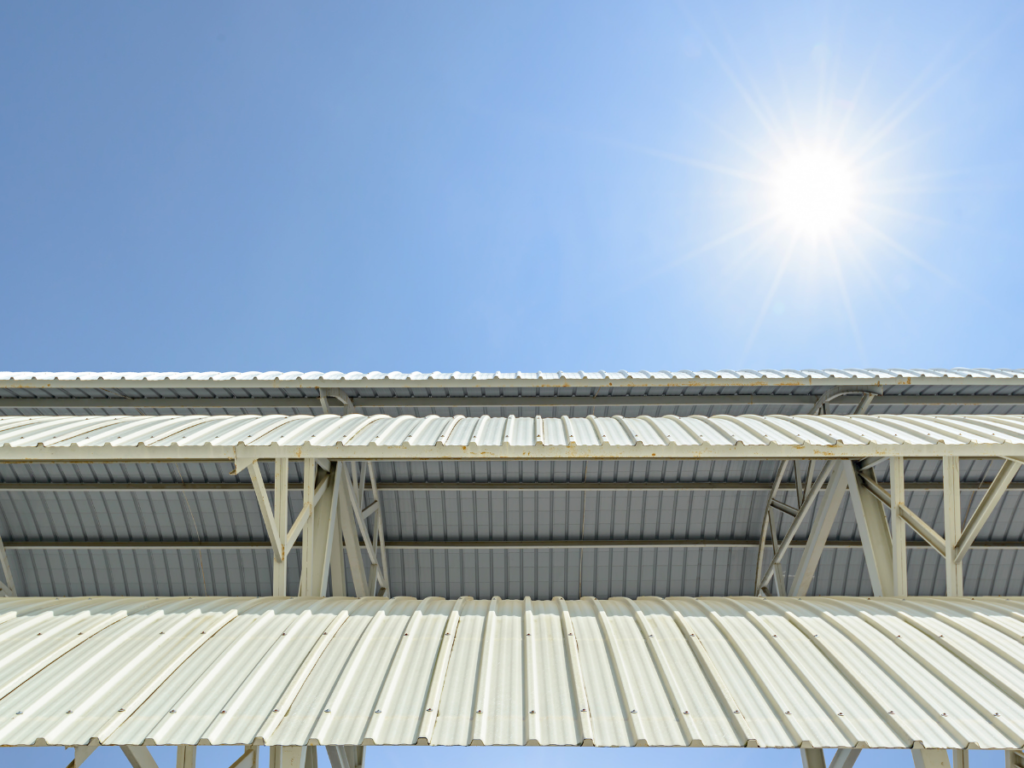
Now on to gambrel roofs. Gambrel roofs aren't technically curved or domed because they're actually made up of straight sections of roof, but a gambrel roof does have a curved look to it.
A gambrel roof is easy to identify because it's made up of two symmetrical two-sided roofs, with a shallow upper section and an extended lower section to maximise the space inside.
Now, it's not common to see a gambrel roof on a domestic building, but it's common with barns and outhouses, so if you live in a conversion, then you may notice a gambrel roof on your building.
A dome roof is, obviously, in the shape of a dome. These aren't common on homes, but may be part of a modern design if it's been made by a particularly ambitious architect.
Durable, practical, and stylish, you'll know a dome roof when you see one!
A curved roof is, well, curved, and it's often a favourite for freshly designed homes for their wind resistance.
Typically, curved roofs are made of metal, because this material is the most easy to manipulate into a curved shape and it also makes the look of the building that much more striking (not that you need more that the curved roof to be impressed, right?).
And finally, this is a bit of a catch-all category that features weird and wonderful roofs like the butterfly roof or mansard roofs, or bonnet roofs or combination roof.
You'll see them all below, so make sure you read this last section in case you have a more modern or older building that has one of these roofs below.
Butterfly roofs are so named because of their butterfly shape. They're designed with an inverted pitch to emulate the V shape of the butterfly's wings.
A middle channel is then added to the centre of the roof so that rainwater and snow can be dealt with effectively.
Striking and practical, this is a favourite for new, modern homes.
A combination roof is simply a catch-all term for houses that make use of two designs, styles or shapes.
It's more complex to identify these roofs, but if you just tell builders you have a combination roof, then they can come prepared for anything!
Mansard roofs are essentially four sided gambrel roofs, with a double slope on each side. A mansard roof is popular when living space inside is important.
The mansard roof is easily identifiable by the double slope, one shallow (upper) and one steeper (lower). This allows the mansard roof to deal with water effectively, whilst also making the most of the living space.
And finally, the last type of roof is the bonnet roof - rather handily, these are just mansard roofs in reverse.
The four-sided gambrel style is the same, but the double slope has a steep upper and shallow lower instead.
So there you have it, the three most common type of roofing categories with detailed info about each common type of roof, and some added extras, just in case!
Knowing your roof types and the materials used is important, so familiarise yourself with yours today so you know what to ask for if you ever need help with replacing or repairing your roof again.